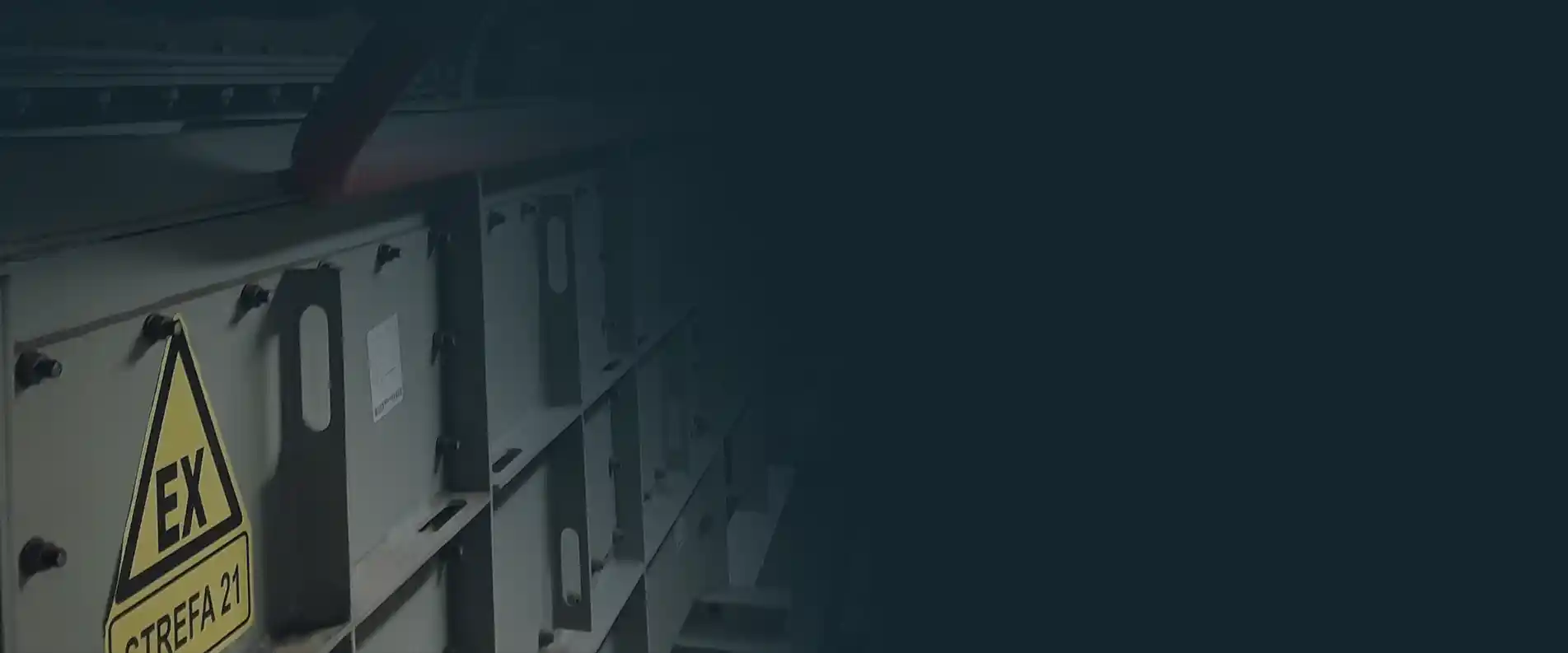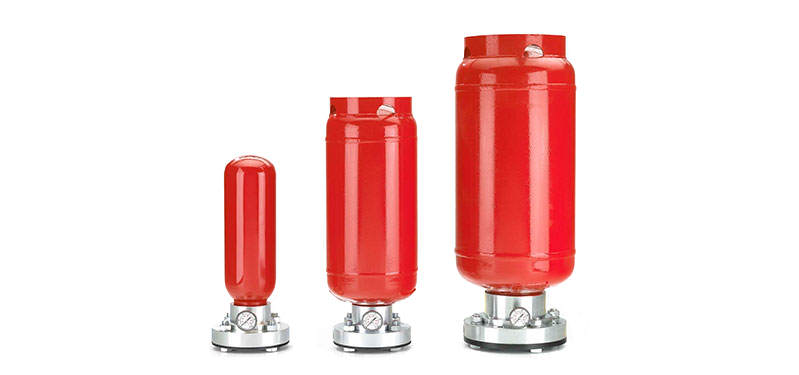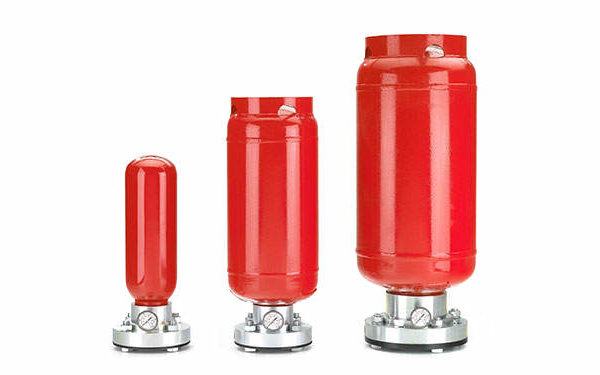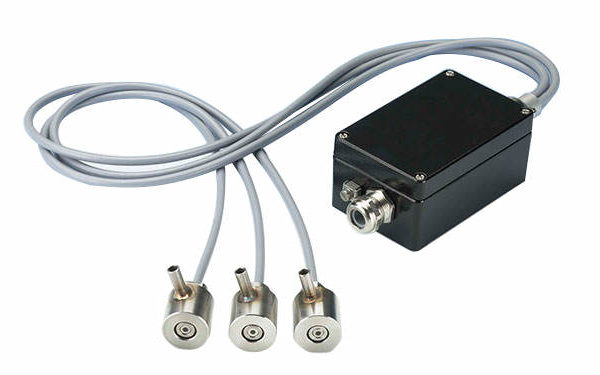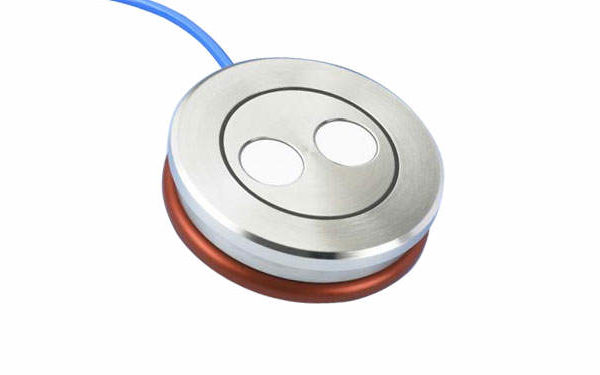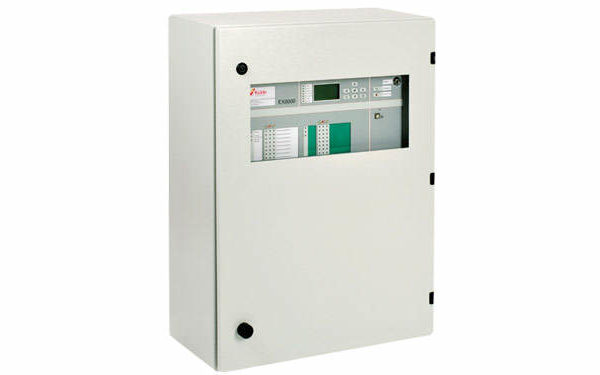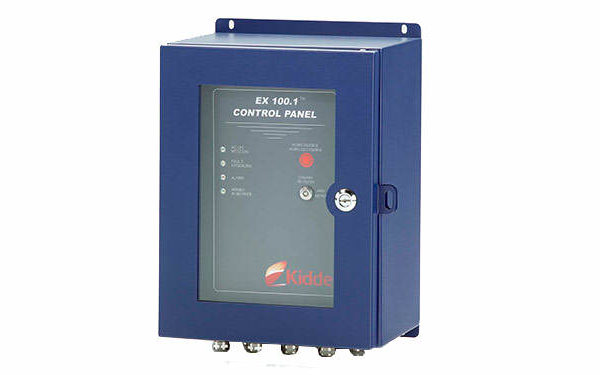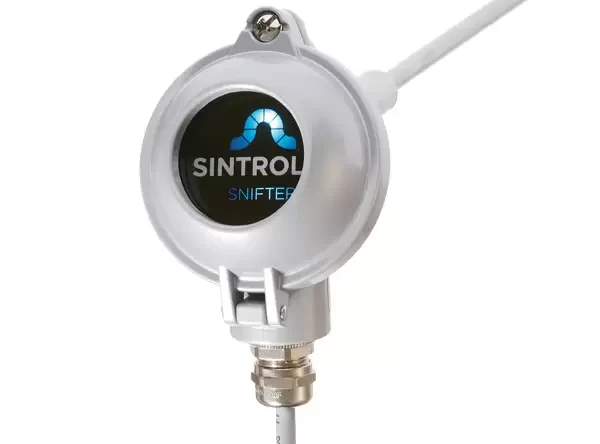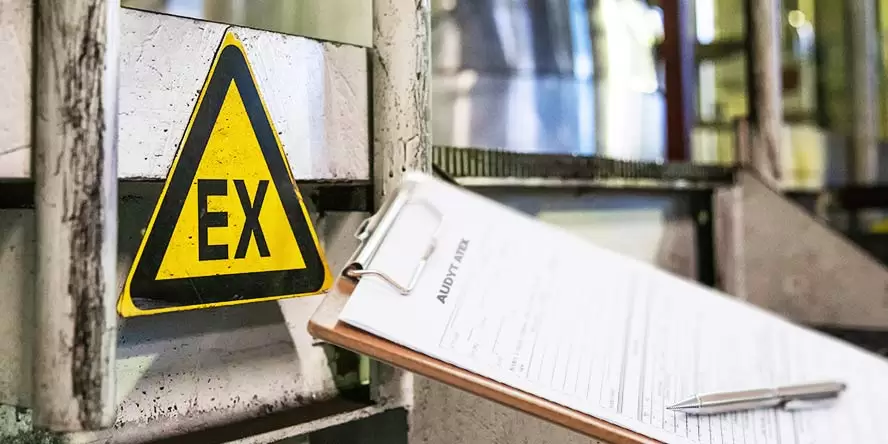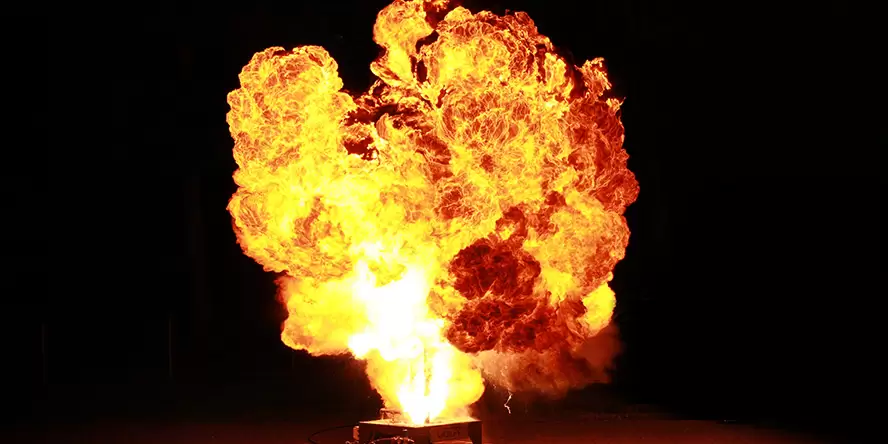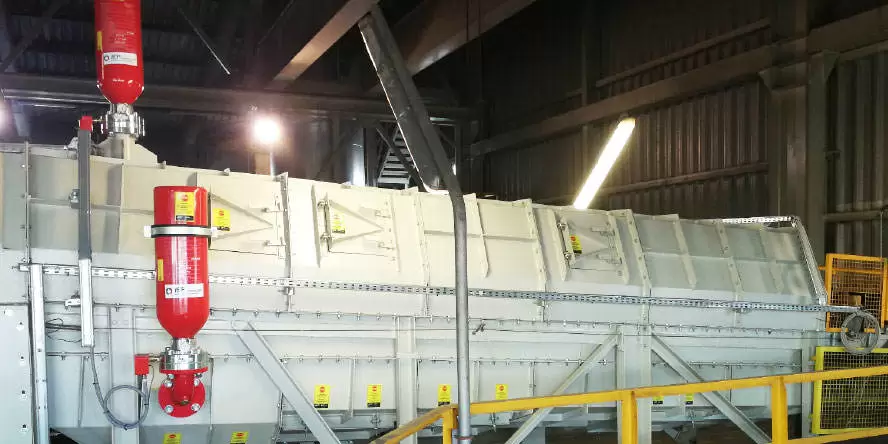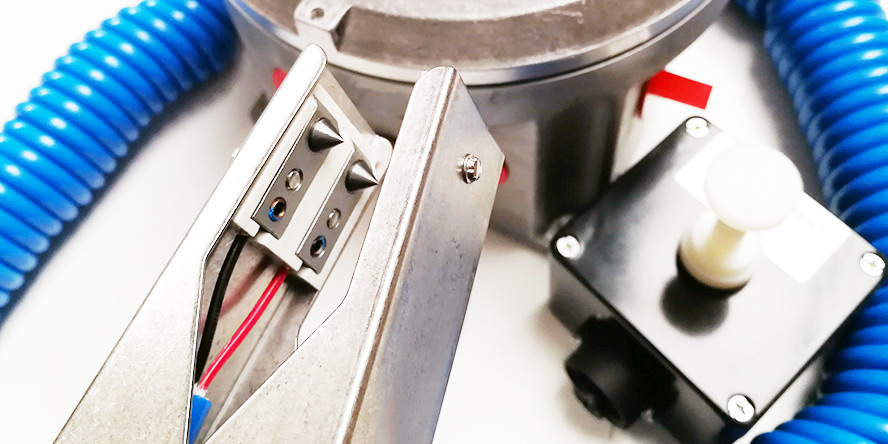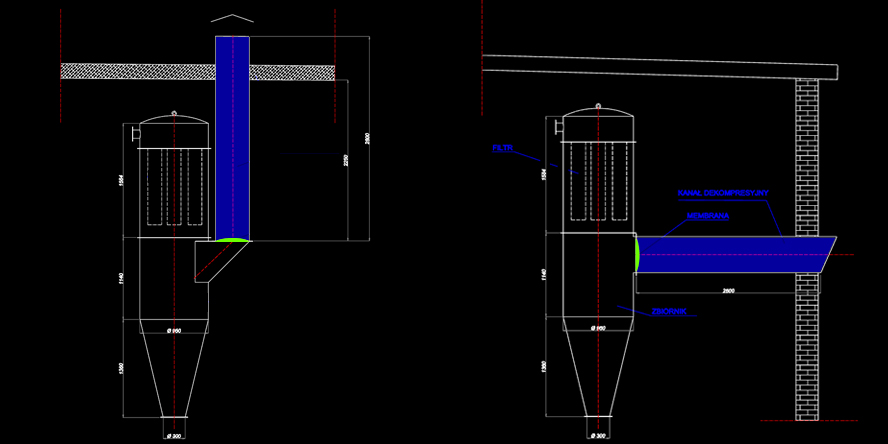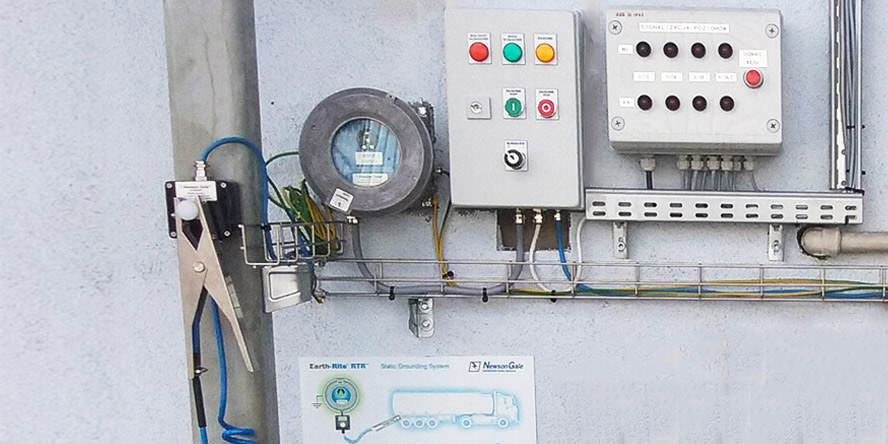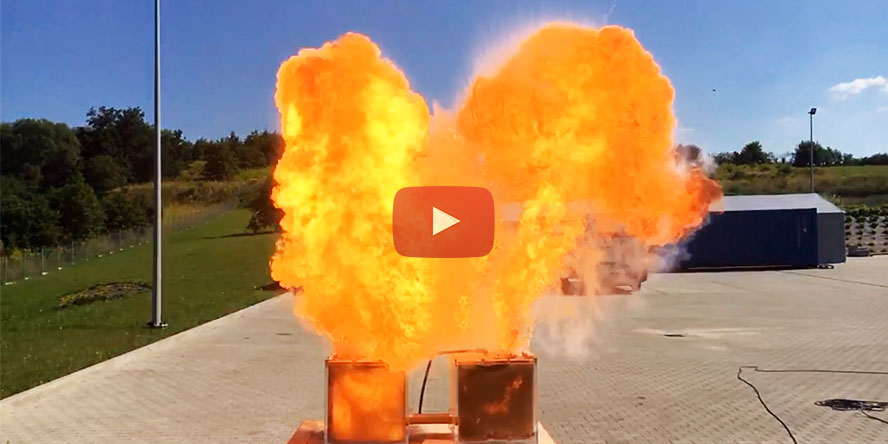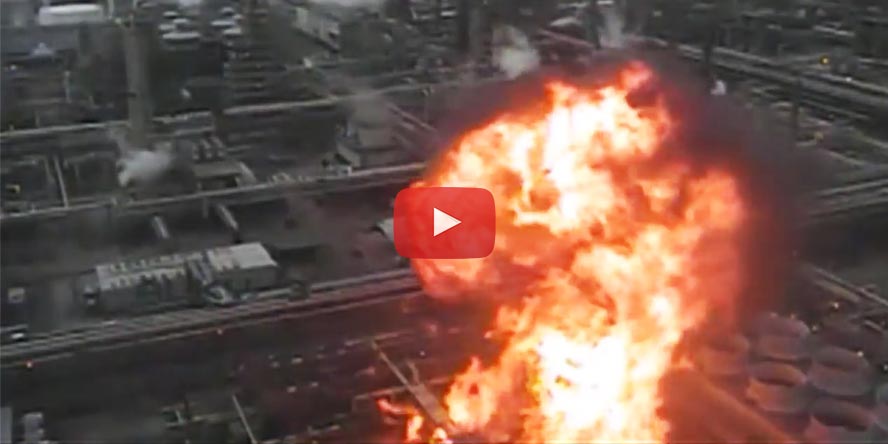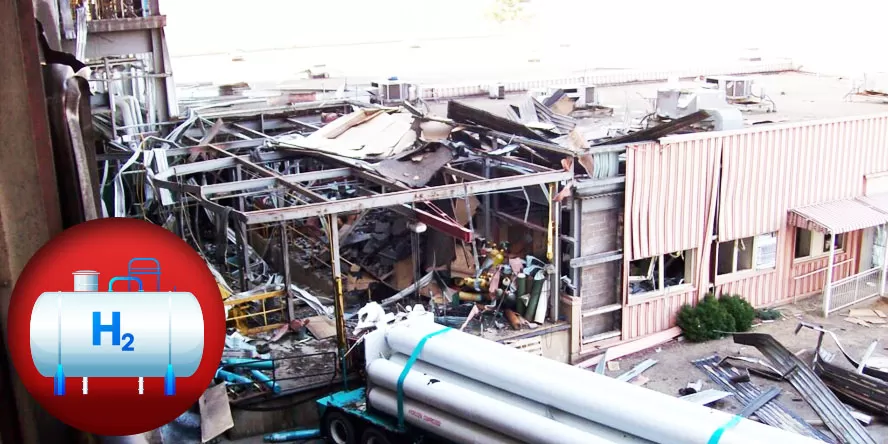Explosion Suppression
Explosion suppression consists of identifying the initial phase of an explosion and injecting a suppressant inside the protected equipment. In this way, the explosion is suppressed as soon as the explosive atmosphere is ignited. This prevents the build-up of excessive pressure and fire in the instrument. It takes only 0.0075 to 0.0300 s from the detection of the explosion to its suppression.
An explosion suppression system is the most universal method of protecting equipment and plant from the effects of an explosion. Explosion suppression systems are the only explosion protection solutions that completely cancel the explosion effects and prevent fire.
The explosion suppression system consists of the following components
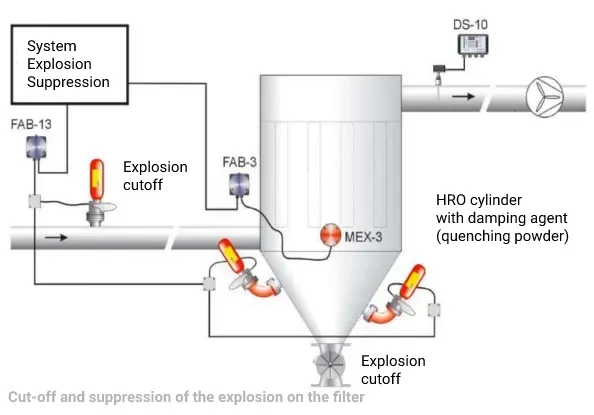
- HRD cylinders including damping powder
- MEX-3, a dynamic pressure sensor. Can be coupled with an IR optical sensor in certain cases
- FAB-3, FAB-13, i.e. pressure transducers which transform the analogue signal from the sensors into a digital signal received by the control unit
- The control panel is primarily responsible for receiving the explosion signal from the MEX and IR sensors and activating the HRD cylinder. The control panel also stops the protected device
- DS-10, i.e. a dust sensor with a control unit that is responsible for detecting dust in the so-called clean part of the instrument. However, due to the presence of a fan in the duct as a potential spark source, an additional safety measure has been applied.
Read more about the system components
Principle of operation of the explosion suppression system
The explosion suppression system is designed to detect in a fraction of a second the surge of pressure in the apparatus which is characteristic of an explosion of the substance inside, and then to suppress the explosion in the next few milliseconds. This is possible due to HRD cylinders with damping powder. These are placed on the instrument and closed with a safety plate. Underneath the safety plate, there is a detonator with a cutting spiral.
If the sensors detect an incipient explosion, they transmit this information to the control panel in the blink of an eye, which activates the detonators under the HRD cylinders. The safety plate is cut by the spiral. The nitrogen pressure in the cylinder (60 bar) ensures that, once the plate is opened, the injection of suppression powder into the protected instrument occurs in between 35 and 80 milliseconds (depending on the volume of the cylinder). This has the effect of cutting off oxygen, cooling and extinguishing the resulting fireball.
Intended use
The most versatile application among possible explosion protection, for use in any industry. Suitable both for protection of instruments located outdoors in halls/buildings and indoors. This solution is accepted by the food and pharmaceutical industry in terms of safety for the food and medicines produced.
Advantages of an explosion suppression system
The unquestionable advantage is that the use of this system does not allow an explosion to occur. So we do not allow a fire, and this means that the time to get the unit back in operation is considerably shorter than with decompression panels or flameless explosion release. Simply clean the unit and replace the HRD cylinders.
Other benefits:
- the only way to protect the instruments with toxic dusts inside,
- the highest level of protection for personnel against the effects of an explosion,
- no damage or deformation to the protected equipment,
- a reusable solution,
Scope of work
- Development of a concept and design for an explosion protection system,
- Delivery and assembly (mechanical and electrical).
- Inspections and service.
Discussion: Why we recommend explosion suppression in a bucket elevator, etc.?
Podnośnik kubełkowy jest dość często używanym aparatem technologicznym, który charakteryzuje się tym, że jest to urządzenie bardzo podatne na możliwość wybuchu. Występuje w nim jednocześnie atmosfera wybuchowa, jak i potencjalne źródła zapłonu. Dzieje się tak, ze względu na ciągły ruch cząsteczek i powodowane wówczas zapylenie, w miejscu, gdzie stale poruszają się metalowe elementy urządzenia. Mogą one po pewnym czasie np. trzeć o siebie i generować ciepło, a nawet iskry.
Najczęściej odradzamy stosowanie paneli dekompresyjnych. Bardzo często podnośniki kubełkowe są tak skonstruowane, że wyprowadzenie wybuchu na zewnątrz aparatu nie jest możliwe z zachowaniem bezpieczeństwa dla innych urządzeń i ludzi. Jeśli podajniki kubełkowe są do wysokości 15-17 metrów można rozważyć systemy bezpłomieniowego odciążenia wybuchu. Natomiast najbezpieczniejszym rozwiązaniem jest tłumienie wybuchu.
System tłumienia można w prosty sposób uzupełnić o dodatkowe butle, budując system izolacji wybuchu. Tym samym możemy jednym systemem zabezpieczyć aparat i izolować go od reszty instalacji.
Rozwiązanie nie jest najtańsze, ale brać należy również potencjalne dodatkowe koszty spowodowane przestojem urządzenia, jeśli zastosujemy panele dekompresyjne lub system bezpłomieniowego odciążania wybuchu. Systemy te tez nie gwarantują izolacji, więc należy wówczas zastosować osobny system izolacji aparatu.
WAŻNE CECHY TŁUMIENIA WYBUCHU
- nie dopuszczamy do wybuchu
- nie pozwalamy rozwinąć sie pożarowi
- nie generuje długotrwałych kosztów przestoju
- krótki czas przywrócenia do użytku
- wystarczy wyczyścić urządzenie
- i zainstalować nowe butle HRD
- uniwersalne rozwiązanie
- do wewnątrz i na zewnątrz budynków
- dla dowolnej gałęzi przemysłu
Projects we have completed in explosive safety
 Design of fire and explosion protection systems
Design of fire and explosion protection systems
Depending on the client’s needs, we are able to supply a single device, as well as designing and then manufacturing a complete fire and/or explosion safety system. Our activities include fire detection and alarm systems, fixed fire fighting equipment, ventilation and smoke extraction, evacuation and emergency lighting, gas detection, as well as suppression, stress relief and explosion decoupling.
 Explosion safety
Explosion safety
With more than 20 years of experience in the field of explosion safety, we provide comprehensive solutions in this area, i.e. from preparing the documents required by the ATEX directive (designation of explosion danger zones, explosion risk assessments, ORD), through selection of the most optimal safety systems to their installation and service. In this way, we become your sole partner, which makes cooperation significantly easier.
Components of the explosion suppression system
HRD-E type extinguishing cylinders
Application: explosion protection of equipment units (including silos, filters, cyclones, mixers, drying plants, pelleting machines, etc.) in presence of flammables at explosive concentrations levels. The HRD cylinders provide explosion protection for processing equipment units, vessels, and ductwork which contain class ST1 to ST3 particulate matter, gases and/or hybrid mixtures in all industrial sectors.
IR-13 infra-red detector
The IR-13 infra-red detector is an explosion suppression system component installed at ductwork and piping connected to bucket conveyors, filters, tanks and other processing equipment types. It provides instant detection of incipient explosion.
MEX-3.2 dynamic explosion pressure detector
The MEX-3.2 type explosion multi-sensor is a multi-functional dynamic pressure detector and a component of the explosion suppression system. It is installed on processing equipment units, tanks, vessels, piping and ductwork to provide instant detection of the ignition of an explosion.
EX 8000 / EX 5000 multi zone control unit
The EX 8000 multi zone control unit provides explosion suppression system monitoring, relay of the stored energy impulse to trigger the HRD cylinders, and on-line verification of the system status.
EX 100.1 si zone control panel
The EX 100.1 single zone control unit is a control feature for the explosion suppression system which manages the HRD cylinders, pressure sensors and IR detectors.
ATEX Dust detector
The ATEX dust meter is designed for use in harsh industrial environments (including explosive atmospheres) to monitor dust levels in ducts and pipelines. It is most often installed on the clean side of the filters and is used to monitor the correct functioning of the dust extraction units. This allows damage to the filter bags to be detected immediately
